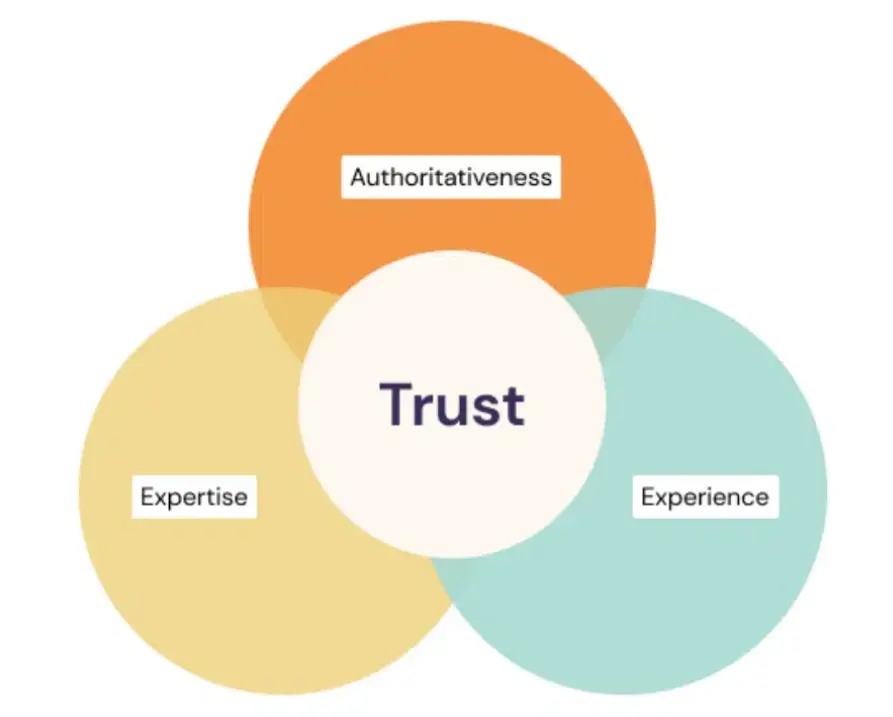SEO Newsletter Once a Week: Serpstat Digest Archive
Unlock the latest trends in SEO alongside top-tier blog content, insightful surveys, and unique perspectives with our free Serpstat Digest.


Research Editor at Serpstat
Join the community of SEO enthusiasts who are enhancing their strategy with our newsletter! You can catch up on recent newsletter insights and updates here:
A new batch of Google algorithm updates awaits us. But the regular updates also mean Core, Helpful Content, and Link Spam Update.
What's unique about this update?
The update uses Google's artificial intelligence-based SpamBrain spam prevention system to neutralize unnatural links. An essential feature of the SpamBrain system is that it is constantly evolving due to the increasing amount of hidden and more complex spam.
According to Google, SpamBrain can now identify sites that buy links and find links from sites specifically created to boost the recipient's link profile. The search engine team also collects user feedback on doorway pages, phishing, and cloaking.
Who will be affected by the update?
The Link Spam Update will affect search results in all languages. The direct impact on your site depends on how you acquire links and link to other pages.
Positions in the search results may experience volatility as the spam update neutralizes unnatural links, eliminating any signals passed to the domain.
How do we protect against losing positions?
- Remember Google's recommendations:
- Affiliate links should be marked with the rel=sponsored tag. If affiliate links are not tagged, the update may affect your site.
- Mark links in guest posts with the rel=nofollow tag.
- Also, work on improving your site to attract new links naturally.
Creating quality content and improving user engagement works better than manipulating links. Good luck!
Earlier, we discussed the E-A-T components (Expertise, Authoritativeness, and Trustworthiness). Experience is now Google's new criterion for assessing content quality. The updated approach, EEAT, primarily concerns areas that affect people's lives, health, finances, and well-being.
What has changed?
Google assessors will now evaluate the personal experience in the site's content: actual product use, topic research, and practical application of the information provided.
Among the main criteria in the instructions for Google testers are:
- The content creator lacks relevant experience.
- The author has a theoretical understanding of the topic and has not applied knowledge in practice.
- The website or author is not an authoritative or reliable source—for example, tax information on a cooking site.
- The page or site raises doubts. For example, a product page with insufficient customer service information.
- The information on the page about who is responsible for the content is unclear. If you wish to avoid spreading personal information, a pseudonym or author's name is an acceptable way for assessors to identify.
Furthermore, Google representatives note that a positive site reputation will not influence the evaluation if EEAT is absent on a particular page.
Which E-E-A-T component is the most important?
Trust. Unreliable pages have a low level of EEAT, regardless of how expert, verified, or authoritative they are. This component is at the center of Google's visualization:

Factors influencing the "trustworthiness of the site" include:
- Information about the company is on the "About Us" or other site pages.
- Actual evidence of the author's expertise in the site's content.
- Opinions about the site: reviews, links.
Until next time, keep innovating, stay informed, and continue to lead in your field!
In marketing, case studies are a unique format of content that provides a detailed description of a project's successful execution or the resolution of real business challenges. Such material helps introduce the user to your product or service and, if necessary, can transform it into a portfolio.
Why write case studies?
Case studies aim to build loyalty and increase brand trustworthiness. When writing, it's essential to use specific data and examples with numbers, timelines, and costs to add additional value for the reader. Moreover, this format can attract new users or increase conversions.
Who should use a case study format?
- Companies providing services (SaaS, startups, advertising agencies).
- Businesses that produce unique or custom-made products for their client, taking into account their needs.
- Companies that possess deep expert knowledge to provide a service or manufacture goods.
How to write a case study correctly?
There is no universal structure for a case study, only a logical one: client-problem-solution-result. The best case studies are those that incorporate elements of storytelling. The general checklist looks like this:
What to write about?
- Identify KPIs for your industry (traffic, conversions, financial results, number of links received) and describe the case.
- Link the case to an update or a hypothesis you tested.
- Write information about significant updates to your service.
- Show how you unconventionally solved a common problem.
How to correctly format the materials?
- A case study is a PR element; pay attention to an engaging headline and a strong first paragraph.
- The structure and text should follow cause-and-effect relationships.
- Add expressive graphics without additional design.
- If you don't have customer success stories for creating case studies — write about your optimized business process.
- If possible, highlight success stories that best demonstrate your company's capabilities.
- If clients cannot disclose revenue and budget data, provide information in percentages and visualizations while respecting commercial secrets.
We hope the insights shared ignite your creativity and empower you to elevate your strategies with compelling case studies.
Many SEO beginners have questions about semantic analysis that are not so easy to find answers to. I decided to review the Serpstat report on Search Questions for all queries related to keyword research and find solutions for you. Let's go :)
What is the optimal size for the keyword list?
The size of the keyword list depends on the site's topic, not the number of pages. In narrow industries and specific services, the number of keywords varies within a few hundred, while in a large online store, there can be several hundred thousand (on aggregator sites, several million queries are used).
What are some negative keywords that can be added to a list?
- informational queries: what, this, how, photo, video, watch, DIY;
- toponyms that do not match your goals;
- phrases implying obtaining services for free: cheap, download, etc.;
- names of popular sites and brands;
- subjective concepts: highest quality/best.
Why collect a keyword list for SEM?
Collecting a keyword list will help you wisely use your budget and get the maximum number of targeted visits to the site.
How do you collect keyword lists for the Apple Store?
Who is the best source of information for key phrases? Google. Does Google have data on iOS and Android apps? Yes. Bingo! It is possible to use Google to gather and analyze keywords. Details in the article ;)
Google Search recently celebrated its 25th anniversary, and we decided to review the most significant updates that have changed SEO year by year:

This was a quick look at our newsletter digests :) You can discover other fascinating pieces in our newsletters and blog pages.
Recommended posts
Cases, life hacks, researches, and useful articles
Don’t you have time to follow the news? No worries! Our editor will choose articles that will definitely help you with your work. Join our cozy community :)
By clicking the button, you agree to our privacy policy.
